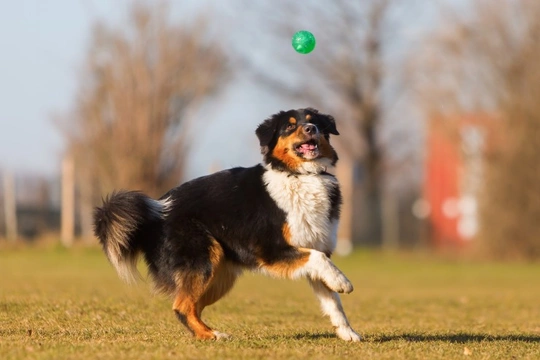
How to teach your dog to catch a ball
A great many dogs will go mad to play with a ball, often bringing it back to you repeatedly to the point that you totally lose the will to live, but your dog is still keen to continue! Many dogs learn or know how to play ball instinctively-particularly those from retrieving breeds, such as the springer spaniel. However, most of us have also met a dog that had us in fits of laugher due to throwing the ball and seeing the dog looking at us blankly with a “get it yourself!” look on their faces-which does indeed mean that some dogs need to be taught how to play ball, and what to do!
In this article, we will look at some of the various methods and steps that you can take to teach your dog to play catch and chase a ball-and how to ensure that they give the ball back to you too! Read on to learn more.
Why teach your dog to catch?
Playing with a ball is something that most dogs really enjoy when they understand how to do it, and it has a lot of other benefits too. Chasing, catching and retrieving are all excellent forms of both mental and physical exercise for your dog, and if you’re not feeling too lively, it makes for a good way to entertain your dog without having to put in the miles yourself!
Playing with a ball is also excellent for your dog’s socialisation, and is a great way to get them involved in play in the dog park, as well as helping them to burn off any excess weight!
How to begin
If your dog doesn’t seem to know what to do with a ball or makes no move to catch it or show interest in it, this doesn’t necessarily mean that they don’t want to play-it may just mean that they don’t know how.
To get your dog interested in the first place, begin with treats, rather than a ball, as this is sure to get your dog’s attention! Sit your dog in front of you a few feet away, and show them the treat, encouraging them to follow it with their eyes but not approach or try to take it. Then, throw the treat gently towards your dog, above their eye line, and they should attempt to catch it. Use only very small treats for this, as you may need quite a few!
If your dog does not attempt to catch the treat but instead waits for it to land, pick it up and try again-and if your dog flinches or appears to be head shy, throw the treat to the side or in front of your dog instead.
Once your dog will attempt to catch a treat, move on to a ball, giving them a treat when they make a good attempt, and of course, praising them.
When your dog will catch or attempt to catch a ball, the next step is to get them to bring it to you.
This can again be achieved with a treat for encouragement, and if your dog drops the ball before coming to you, start again until they get the picture!
When they do bring it to you, use a drop command, and if necessary, gently take it from them-however, never get into a tug of war or wrestling match with your dog if they won’t give it up-go back to basics!
Troubleshooting
If your dog will catch a ball but then runs off with it or won’t bring it back, this can be frustrating and annoying, and is something that you should work on!
If your dog runs off with the ball and will not let you have it, a few things may be happening-they may be resource guarding the ball itself, so swap and change with different balls, and don’t use one that your dog is particularly attached too.
Additionally, if your dog has learnt that bringing the ball back means the end of the game and time to go home, they may be reluctant to do so-so play ball with your dog regularly, and not only as the last game at the end of the walk.
Play with other dogs
Playing with a ball with other dogs can be great fun for your dog, and for you to watch, as a pack of dogs of all shapes and sizes often enjoy charging around after a ball! However, again avoid resource guarding or your dog getting snappy with others by leaving their favourite ball at home, or not taking one at all if your dog is very possessive and will not play well with others.
If your dog plays in a group and is apt to run off with another dog’s ball, this is also something that you should tackle, to avoid flash points and potential fights.



